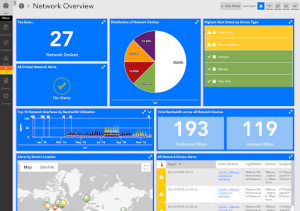Apps development have become a ubiquitous part of our lives. According to recent statistics, 97% of Americans own a cell phone and 85% of these people use mobile apps. Mobile apps alone account for 88% of our time on digital media, according to eMarketer. With that in mind, app developers have a lot to work with.
App Development Design stage
In app development, there are a few stages that you should focus on. This stage is very important. You need to pay attention to the details and ensure that everything is working as it should. After all, you are building an app for users. You need to ensure that your app is user-friendly and easy to use. You also need to keep the design in mind.
The design stage involves a variety of tasks, including gathering basic information, designing a wireframe, and determining how much resources are needed. Once the requirements are defined, you will be ready to get started on the actual app development. This can take a couple of weeks, or it could take several months. You will also want to decide on how much storage space your app will require and whether to use an existing mobile app framework.
The design stage of app development involves incorporating user experience and user interface (UI) design. This is a multi-step process that involves creating wireframes, mockups, and style tiles. Then, you’ll want to iterate on your designs and get feedback on them. The end result is a final blueprint for your app.
The design stage also involves defining guidelines for developers. You should choose an app design that is both aesthetically pleasing and functional. Conducting research can help you come up with innovative and unique ideas. It can also help you identify gaps in the market and potential opportunities in other apps. In other words, it can give you a competitive advantage over your competitors.
Once the design phase is complete, you should be ready for the post-launch maintenance phase. During this phase, you need to make sure that your app runs smoothly and remains secure. You should also consider hiring an app development company that offers post-launch support. This will make sure your app is running smoothly and is protected against malicious attacks.
In addition to designing the app, you should consider the backend systems and the platforms it will be used on. For instance, if you want to make the app available on different devices, you may have to make sure that the app has public APIs for access to public data. Also, different platforms and formats of apps have different requirements. You should also discuss these issues with your team.
Development stage
The development stage of an app involves a variety of activities. Depending on the type of app, it might include designing, implementation, testing, and addressing defects. It also includes registering completion data and defining goals and strategies. The development phase of an app also includes defining the scope and cost of the project. The requirements for an app are typically laid out using a user-centered design process.
A prototype is an important part of the development process. It allows developers to test the functionality of an app and its UX flow. They can also use it to pitch the idea to stakeholders and investors. A prototype also allows them to clearly communicate their concepts and ideas. The development stage of an app also involves creating concepts for the app’s visual layout. Developers work on two or three main screens to conceptualize how the app will look.
The development process begins by defining the technology stack used to create the app. During this stage, software engineers will work with UI/UX designers and quality assurance engineers. They will also work with a project manager and have regular meetings with the client. They will report on their progress on a daily or weekly basis.
The next step in the development process is coding. The developer must write code and make a design for the app. This process will take several weeks or even a few months. The length of the development process will depend on the size of the app and how large the team is. However, most apps take several months to develop.
The development stage is the most crucial phase of an app project. The app developer must be able to create a functional product that meets the user’s needs. They will need to make sure that the product remains fresh and updated throughout its lifetime. In addition, the app development team will have to continually market the product to stay relevant and popular in the market.
The final step of the development process is going to production. Once the app is ready for production, the development team will need to provide documentation to Operations to run the application. This documentation will include user training and operational procedures to allow Operations to successfully operate the app. This step will be followed by an auto and manual testing stage.
Support stage
The Support stage of app development involves the creation and maintenance of app functionality. This stage is critical because it allows developers to detect errors before they become noticeable to end users. They can fix the problems before they affect your customers’ experiences and reputation. This stage involves creating and maintaining a website or mobile application to support the end-users after they have purchased it.
Supporting your app is critical to the success of your app. It involves fixing bugs, glitches, and other problems that users may encounter. These issues are often the result of outdated devices and OS versions, and must be fixed promptly. This ensures that your users get the best experience possible. The Support stage also includes regular updates to the app. Without regular updates, your app won’t run optimally on the latest mobile devices and OS versions. You should always ensure that your app receives at least a minor update to keep it functioning properly.
When planning your app’s features, try to think about how they will work together. If possible, use public APIs to access data available to other apps. Also, consider how different formats and platforms work, as these may require a different back-end system. Before beginning, brainstorm with your team and ask each other for their opinions.
After the Support stage of app development, your app should have user testing to make sure that it meets your users’ expectations. Ideally, you should have a prototype of your app and conduct internal iterations to fix bugs. Once you have completed the UAT testing, you can move on to the next phase of the process: RC (Release Candidate).
App design is another vital stage of app development. This stage involves the creation of an attractive and functional interface. The design stage also includes the creation of databases and other key elements of the app. Once you have completed the design phase, your app developer will start writing connecting code. A working prototype will help you communicate your app concept to stakeholders and investors. It will also make it easier to sell your app idea. If you are looking to build a successful app, it is important to make sure it’s designed well and will meet the needs of your intended users.
Maintenance stage
The Maintenance stage of app development is essential for the long-term performance of an app. This process includes making changes to the existing application and detecting and fixing any errors. It also involves using proven deployment techniques to enhance the application’s throughput. In addition, it ensures business continuity and long-term value.
Maintenance helps to improve user experience and eliminate bugs in the app. It also helps to integrate new features. It also ensures that the app stays active, error-free, and offers value to users. A good user experience leads to higher retention, referrals, and app installs. Maintaining an app can also help you build additional revenue streams by adding new features and services to the app.
While developing a mobile app, it’s important to consider how long the app will be used and how much it will cost. For example, it’s vital that you make a separate budget for app maintenance. It’s important to keep in mind that a mobile app has a long lifecycle and is constantly evolving. In addition, there’s a constant stream of new devices being released with improved specifications. This means that it’s important to provide regular updates to your app and keep it up to date with the latest features and standards.
Another important aspect of app maintenance is security. An app’s security is compromised if bugs aren’t fixed. After launch, it can be difficult to find them, and in some cases, the developer may not even know where to look. However, post-launch support is essential to ensure your app continues to operate smoothly.
It’s vital to hire a qualified app developer with expertise in programming, design, and analytics to help ensure your app is secure and running well. The best developer will also provide post-launch support so that you can maintain the quality of your app. It’s vital to hire someone with a good reputation in all areas.
Testing is an important part of app development because it keeps post-release costs low. You should run integration and unit tests to catch bugs early. Performing tests early in the development process will save you money on future support and maintenance costs. Further, it can identify any broken parts of your app.






